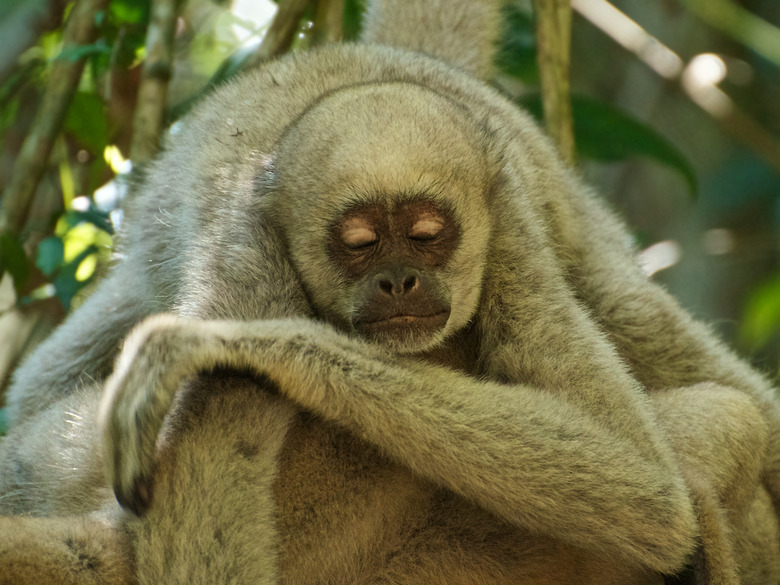Endangered Woodland Animals
Many creatures that rely on heavily wooded areas for survival are growing dangerously near to extinction. The deforestation caused by logging, urban development and other forms of human encroachment coupled with the over hunting and overfishing of certain species has made humankind the main enemy to a number of these animals.
Woodland Oldfield Mouse
Woodland Oldfield Mouse
The woodland oldfield mouse is a terrestrial creature that inhabits Venezuela and the Colombian border. This rodent's scientific name is Thomasomys hylophilus. It is nocturnal, meaning, like many rodents, it is active at night and hides to rest during the day. This species is on the endangered list and is now considered rare. The deforestation of its natural habitat and the destruction to the habitat caused by guerrilla warfare have left the woodland oldfield mouse nearly extinct.
Bulmer's Fruit Bat
Bulmer's Fruit Bat
Bulmer's fruit bat (Aproteles bulmerae) is a critically endangered species of bat native to Papua, New Guinea. This species' numbers are still on the decline. According to the International Union for Conservation of Nature (IUCN), it is believed there are less than 250 adult Bulmer's fruit bats in existence. It is likely that as many as 90 percent of the mature Bulmer's fruit bats are living in the same location. The main threat to this very large bat is hunting. This bat was severely over hunted for food in Papua in the 1970s and the population is not recovering.
Orange-Necked Partridge
Orange-Necked Partridge
The orange-necked partridge (Arborophila davidi) of southern Vietnam and eastern Cambodia is in severe decline due to habitat loss. This species of bird inhabits lowland evergreen forests. Its decline is due, in part, to commercial logging. Another danger to the orange-necked partridge is the pesticide sprayed over their native habitat during the Vietnam War.
Imperial Heron
Imperial Heron
The imperial heron (Ardea insignis) is a critically endangered native bird of Bangladesh, Bhutan, India and Myanmar. According to field surveys sited by IUCN, there are probably less than 300 adult imperial heron in the wild. The main threat to the imperial heron is the degradation and loss of forest and wetlands. This loss of habitat is due in large part to pollution.
Woolly Spider Monkey
Woolly Spider Monkey
The woolly spider monkey (Brachyteles arachnoides) is a small primate native to the evergreen forests of Brazil. Historically, these primates have been (and still are in some regions) hunted for sport. The illegal harvest of trees and legal mining cause habitat loss resulting in a decline of the woolly spider monkey population.
References
Cite This Article
MLA
, Kay Abbot. "Endangered Woodland Animals" sciencing.com, https://www.sciencing.com/endangered-woodland-animals-5434590/. 22 November 2019.
APA
, Kay Abbot. (2019, November 22). Endangered Woodland Animals. sciencing.com. Retrieved from https://www.sciencing.com/endangered-woodland-animals-5434590/
Chicago
, Kay Abbot. Endangered Woodland Animals last modified March 24, 2022. https://www.sciencing.com/endangered-woodland-animals-5434590/
